KEEPERS RESOURCES

High ‘diving’
Diving high and wide is a key example of athleticism in field hockey goalkeeping. ‘High diving’ or dives where you leave your feet and jump diagonally into the save are a useful option when facing short corners where you need to push into and extend to reach a high ball wide of you. Based on your positioning for the corner defence, you may not have a man on the right post, which will mean you will have to be ready to push out in extension against a wide flick. The save technique could also be used when faced with tips and deflections where the ball is redirected high at goal, now more regular and difficult due to the new ‘own goal’ rule, with the opposition looking for a redirect from a ball smashed into the D.
The technique
It’s useful to watch football goalkeepers make similar saves as a way of following the correct procedure to make the save in a game (if you have no access to proper coaching etc.). Without having an illustrative example, it’s difficult to explain! Plymetric exercises and leg strengthening should also help to improve your reach and power as you push off with momentum.
The following is essentially a breakdown of the method:
- Push from the lead foot, energetically driving upwards to push up in order to reach the ball
- Turn at the hip to move your body behind the incoming ball
- Push out with the appropriate glove, turning the wrist to help rebound control
- Extend into the save, diving out high and as wide as needs be as you make the diving action and leave the ground
The second save in the following clip demonstrates how to make such a save successfully:
http://www.youtube.com/watch?v=6hZYpMguwew
Whilst a poor quality video, the following also shows how to make the save process:
http://www.youtube.com/watch?v=HOtbZ-5Jid4
You can watch Stockman (Holland’s number one) high diving well in this clip:
http://www.youtube.com/watch?v=ezhKR476MVk&feature=relmfu
The following shows the appropriate push and how to save to the left, but again, not sure about going down onto the knees:
http://www.youtube.com/watch?v=jn-c2Biqxg4&feature=related
Here’s a soccer goalie demonstrating the required level of athleticism and agility, really pushing into the saves to make the stops, along with a demonstration of the barrel roll. Not sure about the landing though, as needs to be more cushioned:
http://www.youtube.com/watch?v=OrzofdGIxEk
Although this is more of a ‘parade’, it shows the process from start to finish:
http://www.youtube.com/watch?v=ZXWnGeMUxGI
Tips and pointers
It is important to remember that, like diving, the high dive is purely the method to reach the ball: it is the process, not the action of saving. The save is made with the glove or stick, diving merely gets you into the position you cannot reach from a standing position. The following should also be helpful in developing the technique:
- Ensure you have a well balanced ready stance to start off with, so that you don’t fall back during the save attempt
- Make sure your land horizontally on the pad rather than on the knee, so that you can recover more quickly if faced with a rebound or secondary shot
- Make the glove the focus of the jump: it is this that is making the save, the high ‘dive’ is merely the vehicle for getting you in position to stop the ball
- You may find it useful to ‘stamp’ (pushing into the ground to drive into the save) or get lower in your stance like football goalies to get more power into the movement
- The higher the ball, the more of a high angle you want in the diagonal push and extension
- Make sure you don’t land on your elbow or wrist, you want to absorb the fall through the whole arm and body. Football goalies often ‘barrel roll’ to help absorption but I’m not sure this would work in hockey (although I’ve found evidence of Jaap Stockmann doing it, so depends on how quickly you feel you can recover!). Try to make a smooth transition, ending up in a line
The following clip demonstrates the concept of the dive as the method to reach the ball and demonstrates the focus being on the appropriate glove to make the save (ignore the land which is wrong!):
http://www.youtube.com/watch?v=-BIqT9KIF_c
Copying football drills and exercises should be a helpful way of learning the process. There is a specific drill starting off with catching the ball on the ground, then making it higher and higher until the goalkeeper is high diving, in order to build up the practising goalkeeper’s confidence, but cannot find evidence to place it in this article unfortunately.
Here’s a clip with a good drill and great example of the save making process (although the goalkeeper did actually break their wrist – ouch – so only the exercise is useful for explaining the process as he landed wrong, thus causing the injury):
http://www.youtube.com/watch?v=l5vWqr8pkLM
Short corners
Short corners are the main scenario where you will have to make such saves. A lot of corner defence set-ups do not have a man on the right post, since the defender comes off the post to protect against the slip pass to the injector coming in for a deflection. With more room to cover, the goalkeeper has to be ready to defend more of his goal wide to the right. With the drag flicker looking to take advantage of and exploit the extra room to the side of the goalkeeper, you may find yourself having to extend for the save. With the speed and height of drag flicks, it is harder for the goalkeeper to move across from a standing position for the save, so high diving gives them the extra reach needed to make the save. Thus, high diving and use of athleticism becomes incredibly useful.
The following is a great save by Australia’s first choice Nathan Burgers as he makes a high dive to stop the ball with his rhp:
http://www.youtube.com/watch?v=dlYMJZMy054
Comments
Leave Your Comments Below


















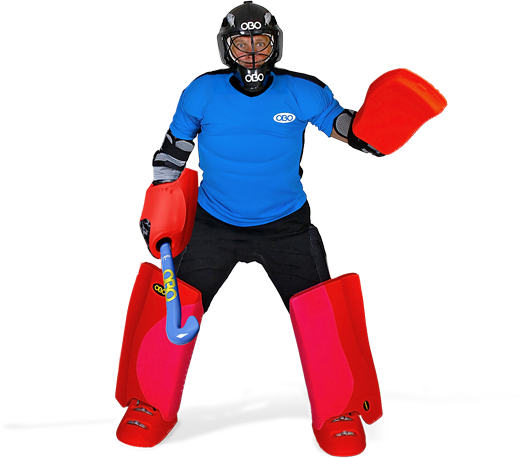

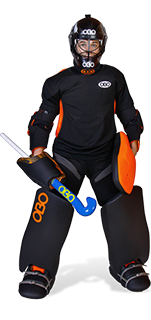



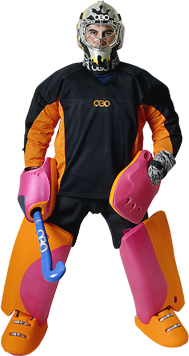






















Thanks for the comment, hope it's been useful!